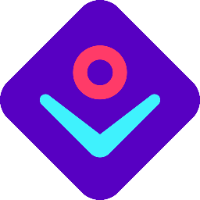Preconditions: The best role to edit a course is the role of Course Manager. However, the Course Designer has editing rights as well. Of course, you can also enter and edit your courses as a Category (User) Manager.
Under “Settings” in the pink top bar you can edit the name of your course, the course image and description as well as other general course settings.
General
The General settings include the name of your course, which will be shown to your learners. You also need to give your course a short name for internal reporting processes.
Your course category is usually already linked here as a path and the visibility is set to “Hide” as long as your course has not been published in the atingi course library.
Course Full Name – this is the name that will appear at the top of each page in the course, in the Content Library and on the dashboard of learners enrolled in the course. This is a mandatory field.
Course Short Name - this is displayed in the navigation “breadcrumbs”, in the subject line of course e-mail messages and it is also used when enrolling users into a course. The course name needs to be self-explanatory. This is a mandatory field.
Course Category – this will be pre-filled with the name of your team category (which is the same as the Course Category) and should not be changed.
Course Visibility – this setting controls whether a course is visible to learners or not. We recommend that this is set to ‘Hide’ while you are working on your new course. Once the course is ready to go, the very last step is to change this setting to ‘Show’ to allow learners to access the course. If you set the course to ‘hide’ once your learners are already enrolled, they will be unable to see the course, despite being enrolled in it still.
Course Start and End dates – these (optional) dates can be used to control availability of the course, but normally these dates can be left unchanged.
Course-ID – this is an optional field that is only required if you need to interface with external systems – usually left blank.
Course Description
Your course description should contain all the below listed elements; we will check on this before course launch as part of our ‘Quality Assurance’:
Course Summary: In this [course format, e.g. self-paced/tutored] course, [target group] will learn [learning objective]. It will take you about [workload] hours to complete and you will earn a [certificate/badge].
Who is this course for? The course is for [insert target group here, incl. prior knowledge if required, aka relevant professions, formal qualifications, and/or skills, or previous relevant completed courses]
What will you learn? By the end of this course, you will be able to [apply X skill] in [X context]’
How much time do you need to invest? Completing the course should take [insert workload in hours here]
Topics overview: [insert topics = keywords here]
Course Start & Ende Date: [only mandatory for tutored courses]
Tutors & Moderators: [insert names here; only mandatory for tutored courses]
Recommended browser: [sometimes certain types of content may display better/worse in certain browsers; we generally recommend Chrome & Edge]
Certificate: A [PDF Course Certificate/Open Badge] will be generated on the successful completion (...)
Course Provider: [insert all course providers here]
Course Developers: [insert all content and course developers here]
Course Contact: [insert your contact here]. In case of technical troubleshooting or questions, please reach out to the atingi team via the atingi help desk.
License: [insert CreativeCommons license here]
Publication Date: [DD, Month fully written out as a word, YYYY]
Notes: [if applicable]
Course Image
The image added here will be displayed on the learner’s course overview, along with the course full name and the course summary:
For course images .gif, .jpg and .png files can be used, and should be uploaded (not linked) in size 16:9 (e.g., 447x252 pixels) and not be bigger than 1 MB - ideally less than 500KB.
Furthermore, the course image should correlate to course content and target group, is easy to understand in meaning even when seen on small mobile screen and contains no to little text.
To upload the image, simply drag and drop it in the course image box.
Course Format
There are different formats to choose from to display your course contents. We recommend using the tile format (modern look).
The tiles format additionally allows for colour customization, adding different images or icons to the tiles and giving them titles.
This is how the tiles look with the first tile being opened to show the activities behind it:
If you have chosen the “tiles format” for your course format, you need to enter the course description into two places: the general settings and also on the course page.
To add the description to the course page, go to “Course”, turn “Edit mode” on and click on the three dots on the right. Here, choose “Edit section” and enter the description into the text field.
After you have saved the changes, the description will be visible in the course.
Metadata Fields
Additional information about the course, or “Metadata fields”, help us to create custom reports about the use of atingi, the courses on the platform and who creates them. Please fill out all fields under “Course info to be filled out” to the best of your knowledge - the information given here won’t be published anywhere on the platform. If you are unsure how to fill out those fields, please consult the FAQ entry about metadata fields.
All other course settings can be left at their default values.
After having adjusted the course settings, click on the pink Save and Display button to get back to your course. You can now start adding activities and resources for your learners.
